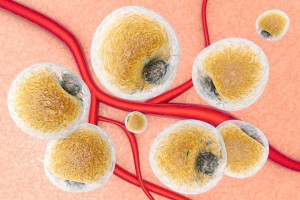 Breast cancer is the second most common type of cancer among women in the US and it occurs when there is an uncontrollable growth of cells in the breast. Cells in nearly any body part can develop cancer and the disease may spread to other parts of the body. In the case of breast cancer, the malignant disease is characterized by tumors that start in the breast cells, while the diagnosis, treatment and prognosis depend on the different forms of the condition.
Breast cancer is the second most common type of cancer among women in the US and it occurs when there is an uncontrollable growth of cells in the breast. Cells in nearly any body part can develop cancer and the disease may spread to other parts of the body. In the case of breast cancer, the malignant disease is characterized by tumors that start in the breast cells, while the diagnosis, treatment and prognosis depend on the different forms of the condition.
The disease affects mostly women, with about 246,660 new cases diagnosed annually in the country. Every year, about 40,450 women die from breast cancer, but improvements in early diagnosis and treatment have increased survival. Symptoms of breast cancer include a new breast lump or mass, swelling of all or part of a breast, skin irritation or dimpling, breast or nipple pain, nipple retraction, redness, scaliness, or thickening of the nipple or breast skin, and a nipple discharge other than breast milk.
Breast Swelling as Symptom of Breast Cancer
Swelling in one or both breasts can be caused by numerous factors and it is not in fact a common symptom of breast cancer. However, patients who suffer from a specific type of the disease, known as inflammatory breast cancer, may experience breast swelling. Symptoms of inflammatory breast cancer, an aggressive form of the condition, include breast swelling or edema, and redness or erythema, which is noticeable in a third or more of the breast. “These symptoms are caused by the buildup of fluid (lymph) in the skin of the breast. This fluid buildup occurs because cancer cells have blocked lymph vessels in the skin, preventing the normal flow of lymph through the tissue. Sometimes the breast may contain a solid tumor that can be felt during a physical exam, but more often a tumor cannot be felt,” explain the National Cancer Institute.
The swelling may be noticeable even before any lump or mass can be felt, which is why patients should tell their doctor about any of these symptoms. Also, breast swelling or rapid increase in the breast size may be related to other causes in patients with breast cancer. When other forms of the disease spread to the lymph nodes, the same process of fluid buildup and swelling can also occur. Patients with breast cancer can also experience breast swelling or swelling in other parts of the body as a side effect of the treatment. Surgery, chemotherapy, radiation therapy, hormone therapy, and other medication like pain killers can cause swelling. However, all of these symptoms may be related to other disease rather than breast cancer, including an infection, injury, or another type of breast cancer that is locally advanced.
Management of Breast Swelling in Breast Cancer
To address the symptom of breast swelling, the course of treatment is to address the disease itself. According to the NCI, “inflammatory breast cancer is generally treated first with systemic chemotherapy to help shrink the tumor, then with surgery to remove the tumor, followed by radiation therapy. This approach to treatment is called a multimodal approach. Studies have found that women with inflammatory breast cancer who are treated with a multimodal approach have better responses to therapy and longer survival.” A rapid intervention is important since inflammatory breast cancer usually progresses fast and aggressively spreads to other parts of the body. A multimodal approach often includes treatments like neoadjuvant chemotherapy, during which the drugs anthracycline and taxane are administered four to six months before the surgery in at least six cycles, while adjuvant systemic therapy is given after the surgery to decrease the risk of cancer recurrence, and it can consist on chemotherapy, hormone therapy, targeted therapy, or a combination of treatments.
More About Inflammatory Breast Cancer
Since inflammatory breast cancer produces higher levels of HER2 protein than normal, targeted therapy with drugs like trastuzumab (Herceptin) is also possible either as part of neoadjuvant therapy or adjuvant therapy. Hormone therapy consists of the use of drugs like tamoxifen to prevent estrogen from binding to its receptor, or aromatase inhibitors like letrozole to block the production of estrogen, in order to cause estrogen-dependent cancer cells to stop growing and die, but it is only possible in patients whose inflammatory breast cancer have hormone receptors. Surgery is a particularly common course of treatment, with a radical mastectomy being the most common surgery indicated for inflammatory breast cancer. In addition, radiation therapy after a mastectomy is often applied to the chest wall under the breast removed, and it is a standard part of multimodal therapy for inflammatory breast cancer.
Note: Breast Cancer News is strictly a news and information website about the disease. It does not provide medical advice, diagnosis or treatment. This content is not intended to be a substitute for professional medical advice, diagnosis, or treatment. Always seek the advice of your physician or other qualified health provider with any questions you may have regarding a medical condition. Never disregard professional medical advice or delay in seeking it because of something you have read on this website.
